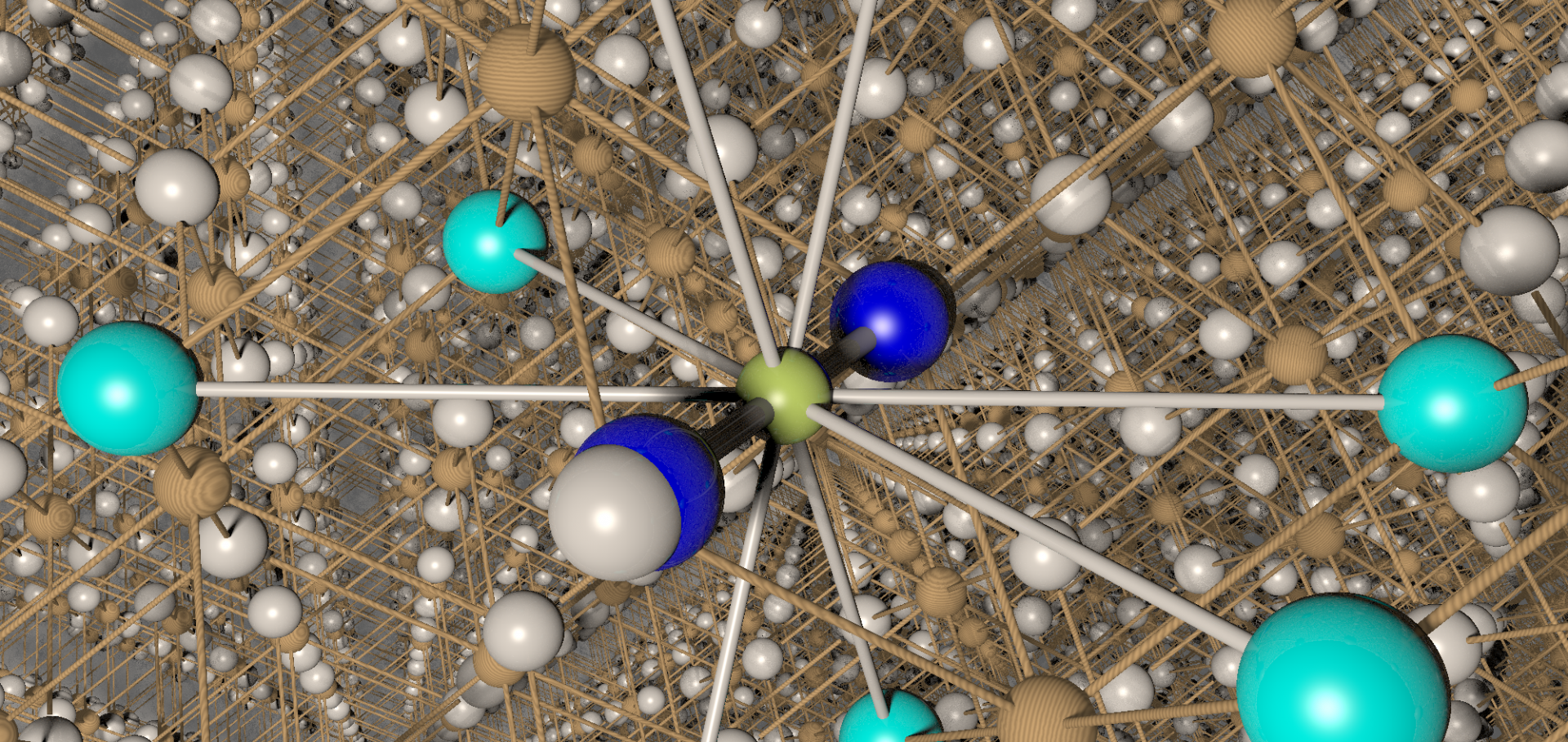Magnetic properties of DCNQI salts studied using mu SR
SYNTHETIC MET 85:1-3 (1997) 1747-1748
Abstract:
Examples from the (R-1,R-2-DCNQI)(2)X family of molecular conductors have been studied using mu SR in order to provide information about the microscopic magnetic properties of the various phases. For the fully deuterated dimethyl Cu salt (d(8)-DMe-Cu) there is a metal-insulator (MI) transition around 80 K and a magnetic transition around 7 K. The muon spin relaxation rate becomes enhanced in the region of the MI transition and below, reflecting the quenching of valence fluctuations and the appearance of localised spins on the Cu sites. A zero field precession signal develops below 7 K as a result of the 3D magnetic ordering of the Cu spins; the field distribution derived from the precession frequency is consistent with the proposed magnetic structure. In addition to the zero field studies, nuclear quadrupolar level crossing resonance between the muon and the imine nitrogen of the DCNQI has been used to study the temperature dependence of the electronic stale of the molecular conductor.Muon-spin rotation studies of the flux lattice in kappa-(BEDT-TTF)(2)Cu(SCN)(2)
SYNTHETIC MET 85:1-3 (1997) 1495-1496
Abstract:
Muon spin rotation (mu SR) studies of the vortex lattice in the superconductor kappa-(BEDT-TTF)(2)Cu(SCN)(2) have revealed a crossover from a quasi-2d to a vortex-line lattice structure for fields below a characteristic field B-cr. The mu SR-lineshapes measured from the vortex-line lattice have allowed a re-evaluation of the in-plane penetration depth.mu SR study of the nitronyl nitroxide p-CNPNN
SYNTHETIC MET 85:1-3 (1997) 1745-1746
Abstract:
We present the results of a muon-spin rotation/relaxation (mu SR) study in zero and longitudinal magnetic fields and temperatures down to 40 mK of para-cyanophenyl nitronyl nitroxide (pCNPNN). This layered material is expected to show ferromagnetic interactions on the basis of susceptibility measurements. In a zero-field mu SR experiment, the spins of muons which are implanted in diamagnetic states will precess in any local internal fields. Bence a study of precession frequencies and/or relaxation rates can be used to follow the magnetic order parameter as a function of temperature. We find strongly temperature dependent muon relaxation below similar to 0.17K similar to that found recently in 1-NAPNN, indicating a magnetic transition at this temperature.Angle dependent magnetoresistance oscillation study of the Fermi surface of β″-(BEDT-TTF)2 AuBr2
Synthetic Metals 86:1 -3 pt 3 (1997) 1977-1978
Abstract:
Angle dependent magnetoresistance oscillations (AMRO) have been studied for the charge-transfer salt β″-(BEDT-TTF)2AuBr2. The temperature range 1.5 K-4.2 K and field region 0.5 T-30 T have been explored. A series of AMRO peaks originating from a approx.40 T elliptical quasi-two-dimensional (Q2D) Fermi surface (FS) pocket have been observed at all fields. The measured orientation of this pocket is in good agreement with band structure calculations. Above a field of approx.10 T a second series of (Q2D) AMRO peaks emerge, indicating a field-induced reconstruction of the FS. It is proposed that this results from a shifting of the nesting vector of the spin density wave which is believed to be present in this material. The high field series of peaks correspond to a approx.222 T elliptical FS pocket with major axis aligned along the direction in which band structure calculations predict Q1D Fermi sheets. It is thus attributed to imperfect nesting of the Q1D FS sheets.Anisotropic polaron motion in polyaniline studied by muon spin relaxation
Physical Review Letters 79:15 (1997) 2855-2858


